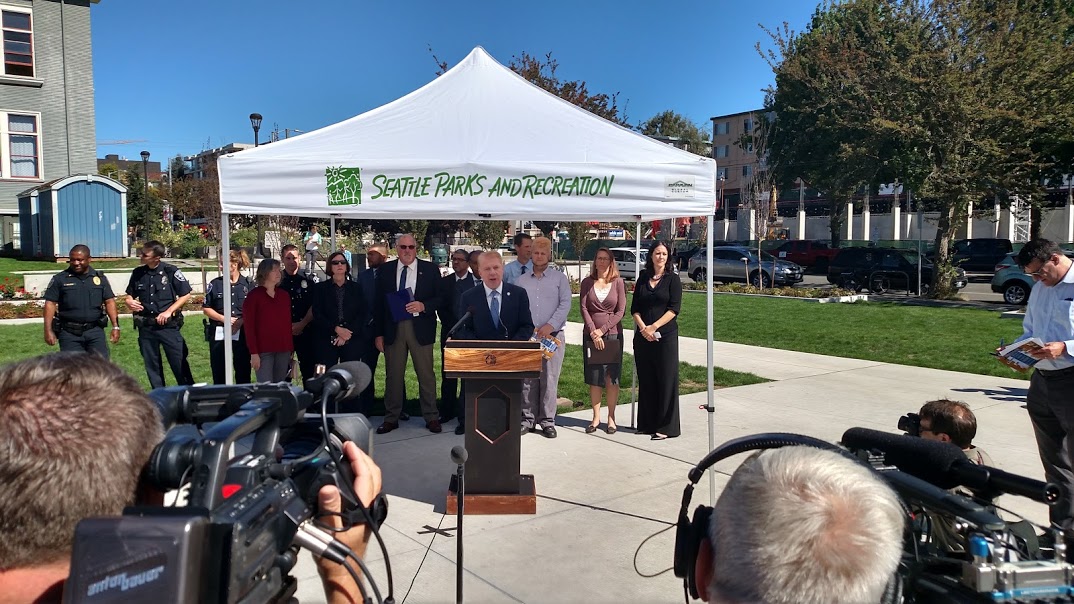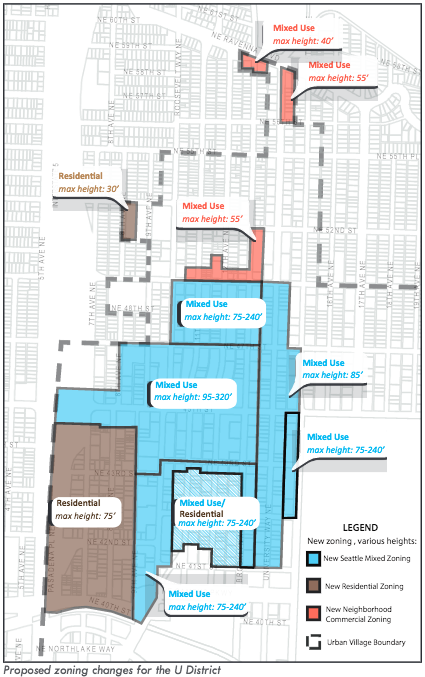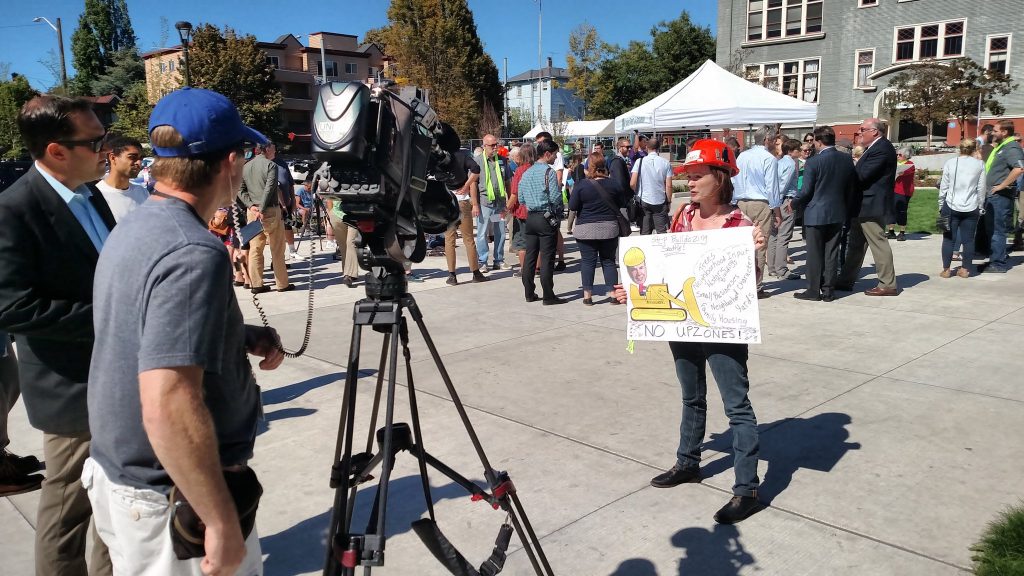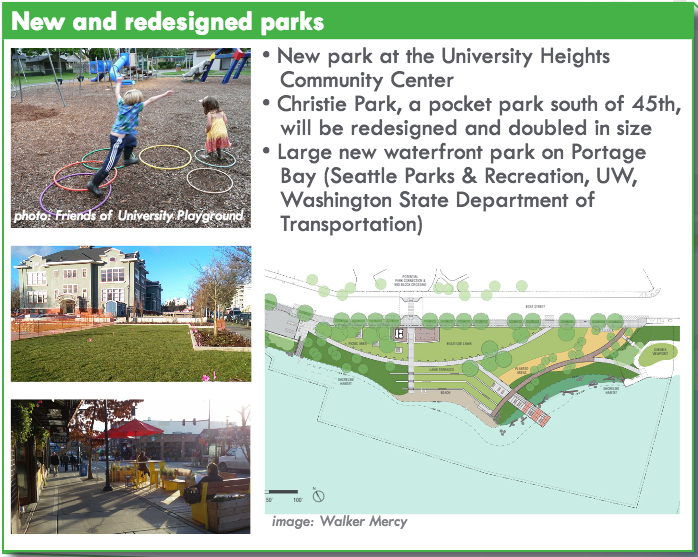
Mayor Ed Murray called a lunch hour press conference outside the University Heights Center and championed the City’s plan to implement zoning and urban design changes in the University District. The Mayor stressed that the plan links the rezone to measures to boost affordable housing and improve livability by setting aside open space and improving pedestrian access and comfort.
Several other stakeholders offered their support for the U District growth plan including Councilmember Rob Johnson. (For more check out our live tweets here.) Murray didn’t get into the details—which The Urbanist covered here, here and here—but judging by the brochure they’ve released this month, the City Council will consider and likely pass a zoning map that looks something like this:

When Mayor Murray asked for questions, a journalist posed a question about the protesters who’d gathered in neon green scarves and brought signs with various slogans against the proposed zoning changes. Mayor Murray got in a few words before they began shouting him down citing Displacement Coalition talking points. Murray said, “People can have their own opinions but you don’t get to have your own facts.” After continued heckling and yelling, Murray declared the press conference over and opponents and proponents tried to get themselves in front of cameras for interviews. Audio of the verbal altercation is below.

Meanwhile, Councilmembers Lisa Herbold and Mike O’Brien issued a joint press release supporting the increased capacity but also calling for increased affordability requirements in light of the larger than anticipated capacity increases.
We are especially interested in reviewing how the executive will address displacement in the new proposed University District upzone legislation as intended by the MHA-R bill. Because this upzone increases zoning capacity beyond what was anticipated in the MHA-R bill, we look forward to working together to ensure increased affordability requirements for the neighborhood. From the MHA-R legislation: ‘The Council intends to consider whether to include higher [affordability] performance and payment amounts … (b) [in] areas where the increment of increased development capacity is greater than the standard MHA-implementing zone change; and (c) … to increase affordable units sufficient to offset the affordable units at risk of demolition as a result of the increase in development capacity due to MHA.’
Whether the rest of the Council will take up O’Brien and Herbold’s idea to boost the affordability requirement in the U District is not certain. As it stands, the City’s brochure boasts that “[t]he proposed zoning for the U District incorporates Mandatory Housing Affordability (MHA) requirements, which will further increase the supply of affordable housing over time by an estimated 620-910 units.” In addition, the City projects that 4,000 to 5,000 market rate units would be produced in the U District under the proposed rezone.
The crucial thing is that zoning changes themselves are enacted to permit growth in an already popular neighborhood getting a light rail station within five years and channeling resources into affordable housing, open space, and multi-modal improvements.

With a newly installed protected bike lane on Roosevelt Way, light rail access and RapidRide service coming soon, and Brooklyn Avenue likely becoming a festival street, the U District is poised to be a neighborhood many, many more people want to call home. Let’s plan like it.
Doug Trumm is publisher of The Urbanist. An Urbanist writer since 2015, he dreams of pedestrian streets, bus lanes, and a mass-timber building spree to end our housing crisis. He graduated from the Evans School of Public Policy and Governance at the University of Washington in 2019. He lives in Seattle's Fremont neighborhood and loves to explore the city by foot and by bike.

